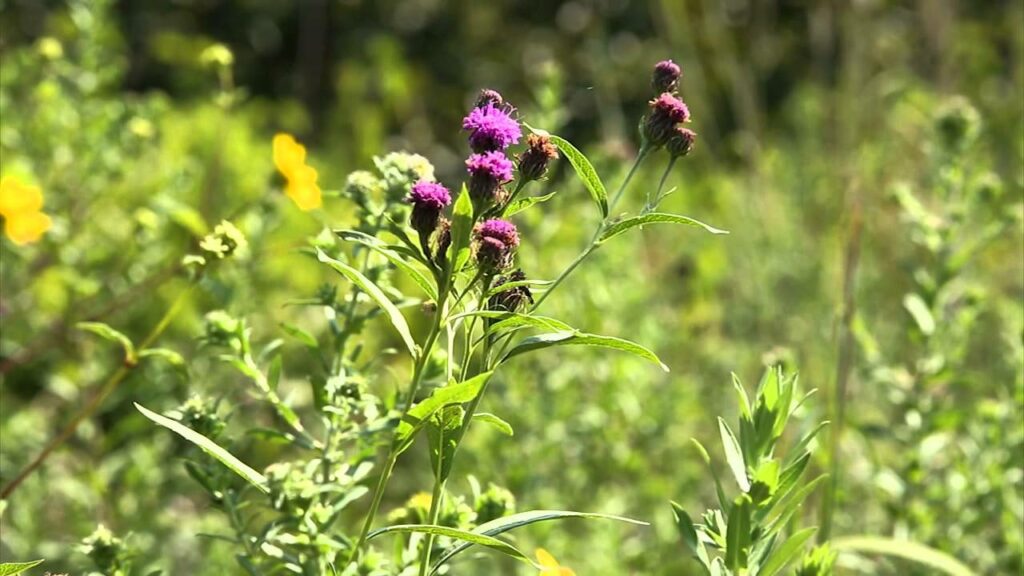In honor of National Grasslands Week, let’s learn about . . . PRAIRIE DOGS!
National Grasslands Week
National Grasslands Week (June 16-22, 2024) is designated by the Forest Service to bring attention to the beauty, history, and ecological importance of grasslands in the United States.
Prairie dogs are burrowing rodents that are unique to North America. Five species of prairie dog call the grasslands of the US home: the black-tailed prairie dog, white-tailed prairie dog, Gunnison’s prairie dog, Utah prairie dog, and Mexican prairie dog.

This black-footed prairie dog “town” or colony consists of many different burrows and family groups. Prairie dog colonies can contain thousands of individuals and can extend for miles. US Fish and Wildlife Service photo.
Once ubiquitous on the prairies, prairie dog populations have declined dramatically in the last 200 years. Two species (Utah and Mexican) are listed as endangered or threatened under the Endangered Species Act, and the other three species are under consideration for listing. Their numbers have dwindled due to human extermination, habitat loss, and disease.
Did You Know?
Prairie dogs aren’t dogs at all! They are members of the ground squirrel family.

A family group of black-tailed prairie dogs in the Wichita Mountains National Wildlife Refuge. US Fish and Wildlife Service photo by Kenny Seals.
The prairie dog is often regarded as a keystone species, and their importance to prairie ecosystems is multi-faceted. Some prairie dog species’ feeding habits keep the surrounding vegetation short and more open, a preferred habitat for both the prairie dog and many other species. Their burrows and mounds contribute to soil aeration and mineral distribution, and their scat adds nitrogen to the soil, supporting plant life. They also appear to be well-adapted to the natural, periodic fires that can keep grasslands healthy.
Keystone Species
A keystone species is a species of plant or animal that plays a significant role in its ecosystem and is considered essential to that ecosystem’s health and normal functioning.

The burrowing owl relies on burrows dug by other animals, like the prairie dog. Nesting burrowing owls prefer areas with a high density of burrows which may provide more escape options for developing young. US Fish and Wildlife Service photo by Kenny Seals.
Many animals, like burrowing owls and mountain plovers, rely on prairie dog mounds and burrows for shelter and nesting sites. Additionally, prairie dogs are an important food source for many animals, like the endangered black-footed ferret, the golden eagle, and the prairie rattlesnake.

Black-footed ferrets rely on prairie dogs as a food source. The black-footed ferret is currently listed as endangered. US Fish and Wildlife Service photo by J. Michael Lockhart.

Prairie dogs are also a food source for golden eagles. US Fish and Wildlife Service photo by Tom Koerner.
Grasslands and Natural Inquirer
Interested in learning more about prairie dogs and the unique ecosystem of grasslands? Read on with these free Natural Inquirer resources:
Learn more about prairie dogs at Series: Prairie Dogs of the American Southwest (nps.gov) and Prairie Dogs (Genus Cynomys) · iNaturalist.















